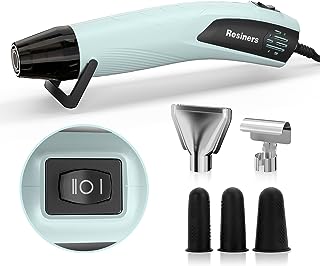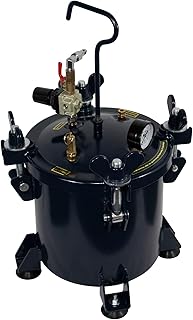5 important factors worth considering when looking for the best fishing line for crafts
Choosing the right fishing line for crafts is important for enthusiasts and hobbyists. Factors like durability, strength, flexibility, and visibility all matter when selecting a line for different projects. By considering these factors carefully, crafters can choose a line that meets their needs and improves the quality of their creations.
See our guide to the best fishing line for crafts.
Material
When choosing the right fishing line for your crafts, the material you pick is really important. Different materials have their own advantages and disadvantages. Monofilament line is popular because it is flexible and strong, while fluorocarbon line is almost invisible underwater, great for a subtle look. Braided lines are super strong and thin, but can be tricky for beginners to work with.
It’s important to think about what you need for your project and consider the pros and cons of each material. The material you choose will affect how your craft looks, how long it lasts, and how well it holds up. By picking a fishing line that matches your goals and skills, you can make your crafts even better and have a more enjoyable crafting experience that fits with your artistic vision.
Weight capacity
When choosing fishing line for crafts, it’s important to consider weight capacity. Some people think any fishing line will work, but the line’s weight limit is crucial for keeping your craft sturdy. Using a fishing line with a lower weight capacity could cause your project to break or get damaged from carrying too much weight. It’s important to figure out how much weight your craft will hold and pick a fishing line with a weight capacity higher than that to make sure it lasts a long time.
Also, it’s not just about the immediate weight, but also thinking ahead about stress on the line over time. By selecting a fishing line with a higher weight capacity, you’re not only making your craft stronger for unexpected heavy loads, but also protecting it from getting worn down. Choosing a fishing line with a good weight capacity shows that you’re thinking ahead when crafting, so your creations can handle different conditions and uses. Focusing on weight capacity might seem like a small thing, but it can really improve the quality and strength of your craft projects.
Diameter
Selecting the right fishing line for your crafting projects is important. The thickness of the line can make a big difference in the final result. Thicker lines are stronger and more durable, which is great for projects that need to hold up well. Thinner lines are more flexible and can create intricate details in your crafts.
The thickness of the fishing line also affects how easy it is to work with. Thicker lines can be difficult to use for delicate designs or intricate knots, while thinner lines give you better control and precision. By thinking about the diameter of the fishing line, you can improve your crafting experience and make sure your project looks and functions the way you want it to.
Color
When picking out fishing line for crafts, the color is more important than just how it looks. The color can make your project look better or worse. Clear fishing line can make your project look seamless and invisible, which is good for projects where you want the focus to be on beads or other things you have attached. On the other hand, colored fishing lines can add a special touch by either contrasting or matching the design of your craft. It’s important to think about how the color of the fishing line will go with the rest of your project to make it look good and come together nicely.
Besides making your project look good, the color of the fishing line can also affect how long it will last. Dark fishing lines are usually better at resisting damage from sunlight compared to light ones. This makes them a good choice for projects that will be outside or last a long time. Some colors may show wear and tear more easily as time goes on, which can make your project look lower quality. By picking the right color of fishing line that matches your project’s look and where it will be used, you can make your project better and make sure it lasts a long time.
Stretchiness
When choosing fishing line for crafts, stretchiness is key to the quality of your project. The right amount of stretch can help balance durability and flexibility. Too much stretch might make your craft weak and prone to breaking. Not enough stretch can make it stiff and limit its looks. Getting the perfect amount of stretch ensures your crafts last and look great.
The stretchiness of the fishing line also affects how easy it is to work with when crafting. A line with some flexibility allows for precise movements and detailed designs, especially for intricate projects. Considering how stretchy the line is when choosing it can make crafting smoother and more artistic. It’s not just about making your craft last longer; it’s about making the crafting experience better, blending skill with creativity.
Conclusion
In the world of crafting, fishing line is a versatile tool that is essential for various projects like making jewelry, beading, or macramé. Its strength, flexibility, and transparency make it the perfect choice. Crafting with fishing line allows for endless possibilities and intricate designs, making it easy to bring creative visions to life with precision and durability. As fishing line seamlessly integrates into the crafting world, it has become a must-have tool for artisans looking to enhance their creations with artistry and craftsmanship.

